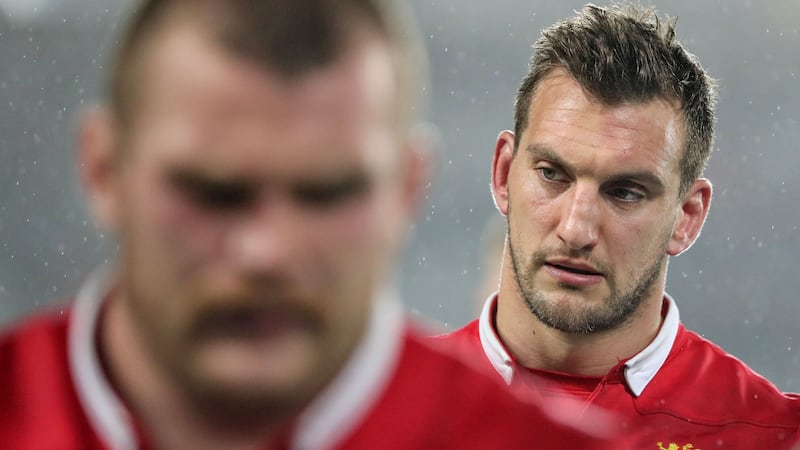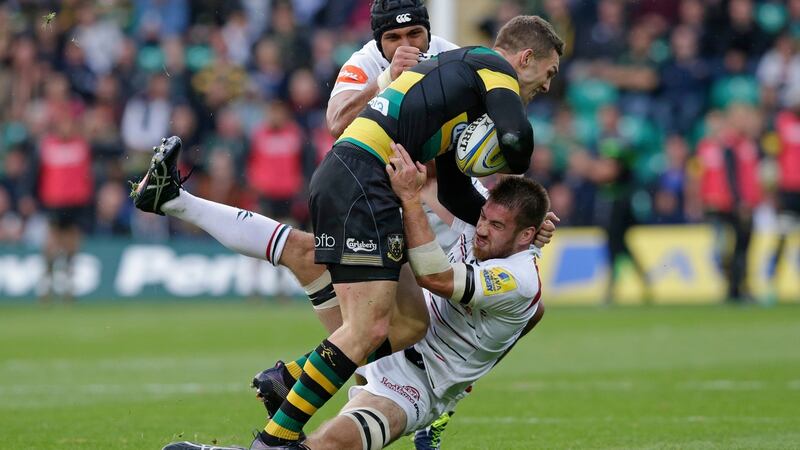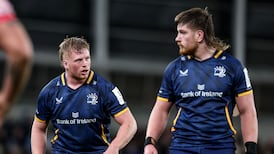Still they leave. During the week, the Ulster flanker Chris Henry announced his retirement from rugby with immediate effect. He said that the sport that had been central to his life since childhood had taken its toll on his body. He had to go. He is 34 years old. By any measure, Henry achieved a level of rarely attained excellence in his chosen sport, smoothly progressing from Wallace to Queen's to Ulster to Ireland, winning 24 international caps.
He bowed out with a classy and heartfelt tribute to his wife and family, to the supporters and to the game. His exit from the game merited a brief respectful media pause before attention turned to the impending glamour and intrigue of the autumn internationals, with Argentina in Dublin this afternoon before the dark, glamorous cloud that is the All Blacks appears on the horizon.
Henry joins the growing list of athletes in the prime of their lives left broken by rugby. His former team-mate Jared Payne (33) is now backs coach with Ulster after failing to recover from a head injury suffered while playing for the Lions against Chiefs last summer. The headaches, the general feeling of being unwell, the flaring migraines wouldn't leave. The sight of Payne in full flow was rugby at its best but his time was up.
It was the same for Declan Fitzpatrick (who retired at 31), Kevin McLaughlin (31), Nathan White (35) and Dave McSharry, the 26-year-old Connacht centre who retired following medical advice after a series of concussions, playing 65 times for the province. Professional sport is a brutally forward-looking business. Even as the respective clubs issued press releases paying tribute to their departed players, the stadium was being prepared, the tactics outlined, injuries assessed for the next game, the next win.
There’s something merciless about these scenarios in which professional rugby players are catapulted from their sport, their team-mates and into the real world without a second thought. Through nobody’s fault, they are kind of flung overboard and the ship keeps moving. The dream finish – the crowd applauding its thanks, the retiring star waving goodbye, the garlands and smiles and tears – rarely happens. Instead, a quiet, sombre conversation with a medical expert, a tough decision and it’s over.
Henry didn’t specifically relate his retirement to concussion; he had suffered a mini-stroke in 2014 on the eve of the Springboks match and recovered to play for three more seasons. But something told him it was time to go. Henry was a terrifically diligent and brave professional rugby player: the kind you find in every dressingroom.

Sam Warburton was a star of the world game: an iconic figure in a charismatic Wales team. He was the prototype of the sort of athlete that has emerged from rugby as it evolved from a game of elusion to a game of collisions: 16 stone, athletic, aggressive and playing with an intensity and commitment that far exceeded financial return or contract. For Warburton, the toils of the game had reached the stage where doing overhead lifts in the gym left him with shooting nerve pains through his neck, with continual muscle soreness and joint pain. One of the consequences of being among the best openside flankers in the world is that Warburton was always in demand: for Cardiff, for Wales, for the Lions. There wasn't a game in which he wasn't needed. So his knees are shot before his 30th birthday.
The current HIA procedure is a black joke
Warburton’s enforced disappearance from the scene prompted an admission from Agustín Pichot, the vice-chairman of World Rugby, that the game is taking its players to breaking point: that it is a red flag day. Pichot has been a breath of fresh air in the role, starkly outlining the financial crisis facing the international game and the unfairness of asking the game’s elite to play so many games for club and country.
Here is someone of real influence admitting that there is something inherently wrong with the way rugby treats its best practitioners. In September, Dominic Ryan told John O'Sullivan about the series of head injuries that ended his rugby life in an interview that appeared on these pages. His account was riveting and gets to the heart of the contradictions about rugby. Yes, Ryan knows the correct tackling technique. But the animal competitor within thrived on what he termed "a lack of respect for my body".

Tackling hard and often and with no regard for his safety was part of his game plan. A series of blows to the head left him with searing migraines, dizziness, blinding lights: it rendered his life sufficiently hellish for him to make the courageous decision to leave. When he discussed it with his neurologist in London, he was told that there were players out there with symptoms worse than him who are still playing on.
Who are they? And how are they being allowed to play? And is it right to pay in to watch them? The current HIA procedure is a black joke. A player gets an elbow or an accidental knee to the head or is smashed in the face with a high tackle. He goes down: maybe he was out cold – “a flick of the lights, the rest of the brain” as Ryan put it. Either way, he’s unlikely to be thinking straight when the medic puts the requisite questions to him.
The competitor in him wants to keep going; the team-mate in him wants to stay on. Maybe he convinces himself. The dizziness will pass. The headache will go. He’s okay. This is the scenario in which the team medic has to make a decision that could affect the short- and long-term health of the player under his care. It places both athlete and doctor in a horribly vulnerable situation. At best, it’s a game of chance.
There is something magical about autumn rugby internationals: the wildness of the afternoons suits the mood of the occasions. New Zealand and England in Twickenham today feels like something more than a mere Test. The interest in next Saturday’s game in Dublin will be immense. Both weekends promise scintillating sport. But even as you watch it, whenever there is a mistimed or high tackle and you see the juddering violence, the impact on the athlete, you have to acknowledge that you are watching a sport that is playing roulette with the welfare of its brightest and best.
Rugby union players have never been faster or stronger. Consequently, the available space on the pitch has disappeared. It is a game of constant attrition and physical toil. You hear the words of the conscientious objectors, such as Dr Barry O'Driscoll, uncle of that number 13, saying calmly and reasonably that world rugby is already in the midst of a crisis around brain injury: "However the crisis may not manifest itself for some years to come," he told Gavin Cummiskey on these pages a few years back. "They have not been honest with the professional players and that has reverberated throughout the game."
What if he’s right? What if his is the voice nobody is hearing through the roar of the crowd? What if what we are all enjoying right now turns out is that actual wrecking of lives? But then, you know, the All Blacks are out there on the field, crouching into their processional haka and the stadium is rumbling with expectancy and menace and then the oval ball is spinning through floodlights: it’s just a game, the essence of winter and oh, the hits, the hits.













